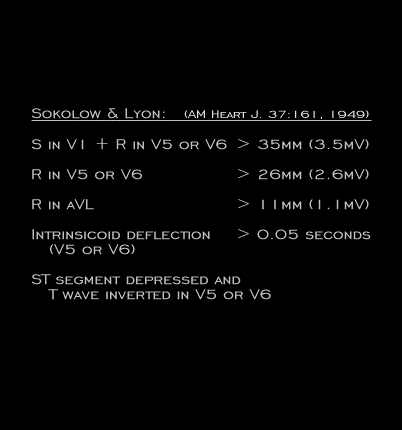Four sets of ECG criteria are now commonly employed for the diagnosis of left ventricular hypertrophy. All focus primarily, but not exclusively, on changes in R and/or S wave amplitudes. Shown here are the criteria published by Sokolow and Lyon (S & L) in 1949. Note that the duration of the intrinsicoid deflection and changes in the ST segment and T wave are also considered.

